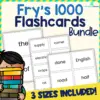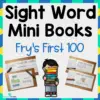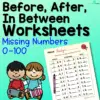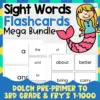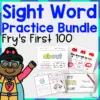Recognizing the numbers and naming each of them is a crucial math skill to learn in preschool. From zero to ten, children should be able to distinguish the numbers despite the similarities in their appearance.
Here are ten activities that children will have fun doing while they learn this skill.
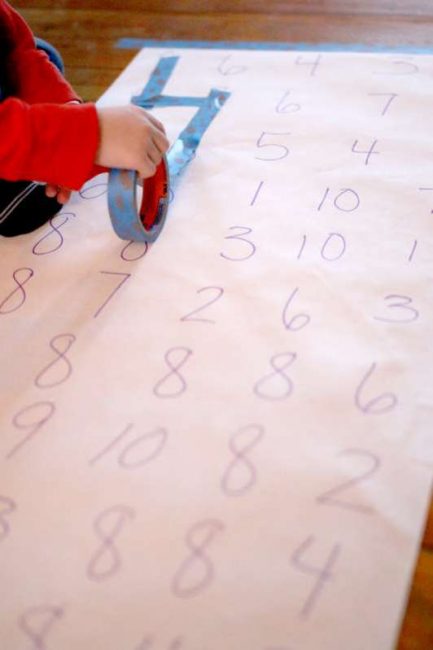
This fun and exciting activity provide children the chance to practice recognizing numbers. This is also a great way to introduce puzzles and teach directionality.
While the main objective of this game is for children to identify a specific target number, it also provides an opportunity for them to practice their cutting skills. Covering the numbers with tape will help strengthen their hand-eye coordination skills.
The site recommends using butcher paper for this activity; however, it can also be done using smaller-sized paper. The difference is that it will take longer for the child to finish the task using the butcher paper.
Cut a butcher paper several feet long. Write the target number repeatedly from the top going down. These need not be in a straight line. Like a maze, it can be formed from the left or right, provided that it will create a connected line.
Next, fill the rest of the space with other numbers. Ask the children to cover the number with painter’s tape. Cut the tape to size several times. These should be connected, forming lines up to the bottom of the paper.
For this activity, you will need:
- Butcher’s paper
- Painter’s tape
- Marker
- Scissors
For more information on this activity, go to HandsOnAsWeGrow.com.
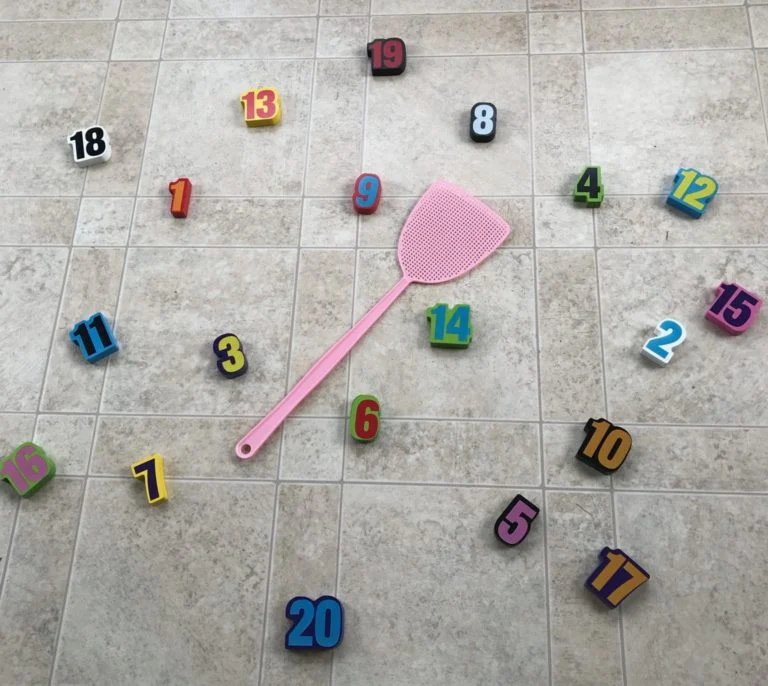
Simple and with no prep, this activity is an excellent way for children to recognize numbers from one to twenty. Depending on the goal, this activity can be customized to focus on a single number or a series of numbers.
Encourage the children to look closely and pay attention to the number puzzle pieces to find the correct number. Doing this will strengthen their attending, scanning, and visual discrimination skills.
Place the numbers from the puzzles on the floor or a table. Ensure that they are scattered and evenly spaced apart. Provide a fly swatter for each child. Have the child swat a given number.
To work on a specific number, place more of the same number in the group. For example, put several number sevens on the floor. Use different fonts, colors, and sizes of the number seven for generalization.
If number puzzles are unavailable, use flashcards, stickers, or any numbers that are large enough for children to identify.
For this activity, you will need:
- Fly swatter
- Numbers from puzzles
For more information on this activity, go to ABCDELearning.com.
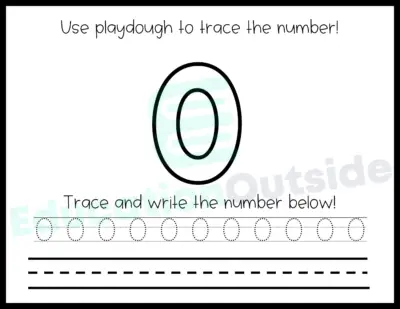
These playdough mats are perfect for children to work on their number recognition skills. This three-in-one printable will give children enough practice to learn about the number forms using clay.
Their hand muscle strength will improve as they form the clay to fit into the bubble numbers. Their writing skills will also improve as they trace and write the same number.
These number mats can be used as a supplement for lessons on numbers. It has twenty-one pages to work on, from zero to twenty.
Download and print the number mats from the site. If possible, laminate these to make them reusable and durable. Provide children with playdough. Have them knead and roll a chunk of clay to form logs.
Shape these logs to fit inside the bubble numbers. Next, have children trace the dotted numbers using a marker or pencil. Once finished, children can practice writing the numbers on the line.
For this activity, you will need:
- Printed number mats
- Playdough
- Marker or pencil
You might also want to check out EducationOutside’s Number Name Playdough Mats: 0-20.
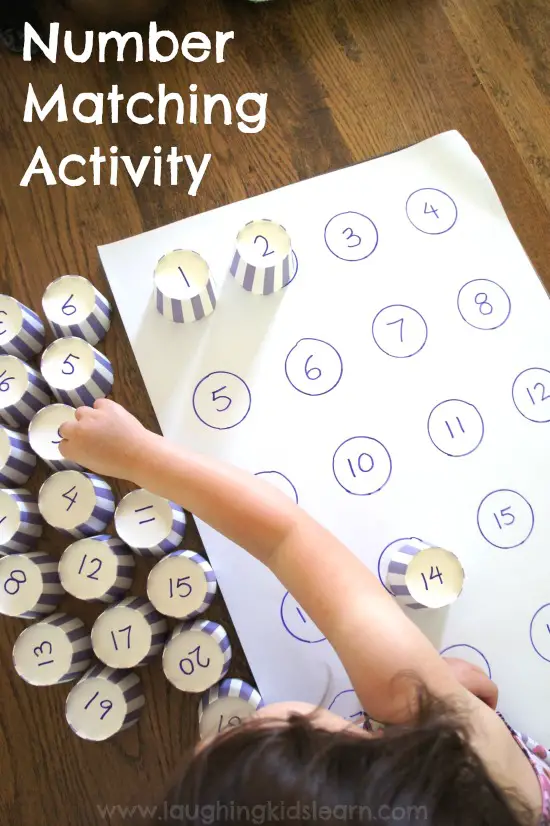
Being able to match identical numbers correctly is one of the signs that children can recognize numbers well. This simple activity will help children practice the skill while having fun.
Children must look at the numbers on the paper and choose the correct cup liner. Doing these will help them improve their scanning ability and concentration. This activity will also help teach them patience.
Take a large sheet of paper and trace the cup liner on it. Fill the circles on paper with target numbers. For example, write zero to ten or up to twenty, depending on the lesson.
Next, flip the cupcake liners and write the same numbers on the bottom part. To match the numbers, children may look at the mat, choose a number, and find its identical match from the cup liners.
Children may also choose a cupcake liner and find its match on the paper. Modify this option by placing the liners far away from the paper. This will provide extra steps for children to work on their gross motor skills.
For this activity, you will need:
- Large sheet of paper
- Pen
- Cupcake liners
For more information on this activity, go to LaughingKidsLearn.com.
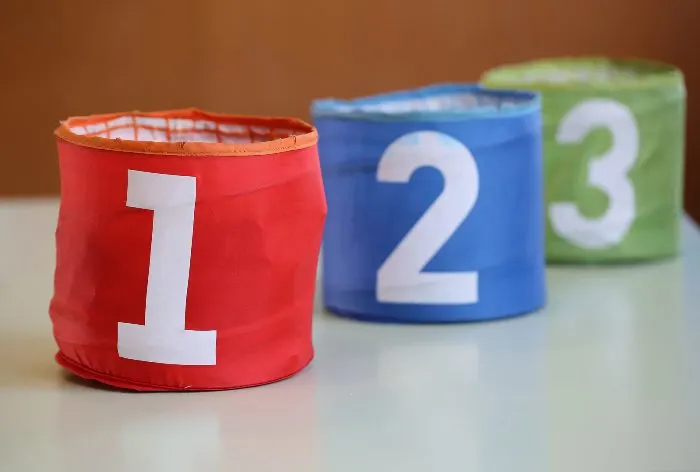
This activity is versatile and can be done in different ways that are fun and simple. Use large enough bags to fit several bean bags and sturdy enough not to get toppled easily.
Children will learn to match numbers, identify, and count as they throw the bean bags into the targets. Intentionally throwing the bean bags will increase their arm muscle strength and eye-hand coordination skills.
Place cut-out numbers on bags or write the numbers on paper that is big enough to see these from a distance. Give children a bean bag and have the child throw it in the bag with the intended number.
Modify this activity by placing a number on the bean bag. Children will find its matching bag to throw it in. Children can also put as many bean bags as needed in each bag, depending on the stated number, to practice their counting skills.
The site recommends also using this activity to teach about the concepts of more and less.
For this activity, you will need:
- Bean bags
- Bags with numbers
For more information on this activity, go to EmpoweredParents.co
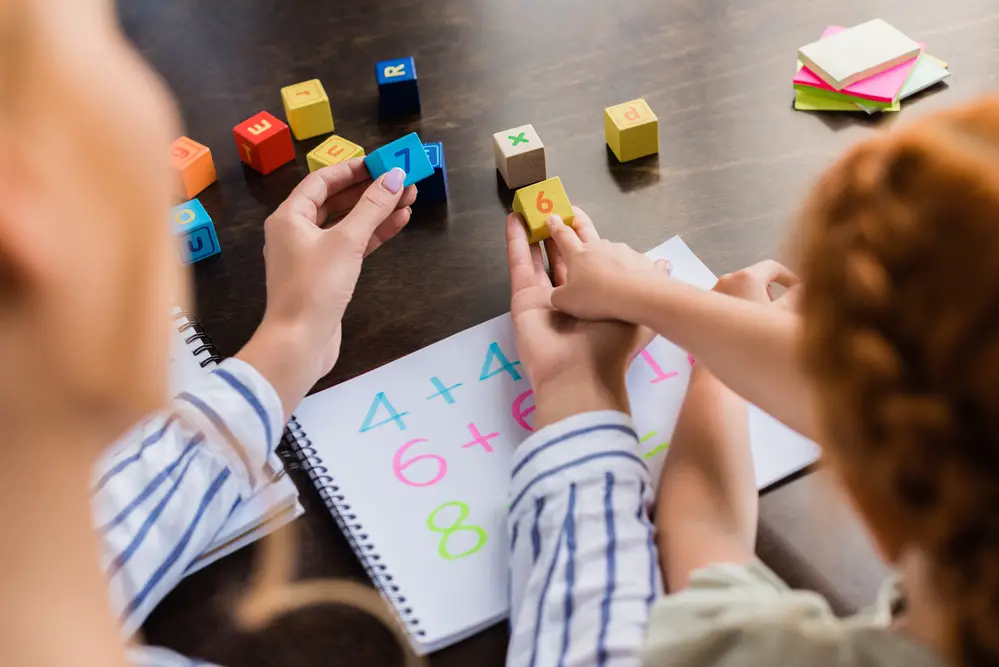
Children will learn to recognize numbers through a neighborhood scavenger hunt game. Walking around the neighborhood provides good exercise. Walking while searching for numbers will improve children’s attention, concentration, and patience.
Being able to point out and identify the numbers that they see around will help improve their environmental print awareness.
This means that children will learn that symbols and signs may come with numbers to indicate a location or other important information.
At the beginning of the activity, state the purpose for walking. Inform children that they need to find numbers around the area. These can be located anywhere they can point at any size.
Provide a paper with numbers zero to ten for young children to compare. They can check if the number they see are the same on the paper before identifying them.
Older children might not need a cheat sheet. They can quickly point and say the number’s name.
For this activity, you will need:
- Paper
- Marker
For more information on this activity, go to LearnWithHomer.com
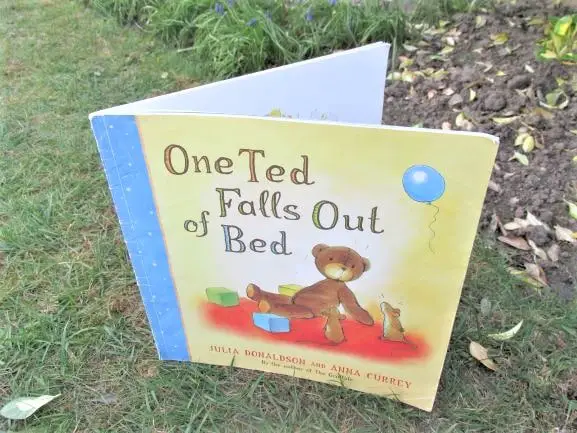
Stories are powerful tools in teaching concepts to children. Use preschool books or made-up stories to teach children number recognition skills. These can be storybooks with simple illustrations that children can count and point out the numbers.
Some of these books that can be used are “Ten, Nine, Eight” by Molly Bang, “Ten Black Dots” by Donald Crews, and “Mouse Count” by Ellen Stohl Walsh. Some books focus on a specific number and can be used for the number of the week’s lesson.
Made-up stories are also a great way to customize the number lesson. The site suggests making the stories interactive for children to develop their curiosity and attention using a bag and a few objects.
To do this, place several identical items in a bag in the target number. For example, put three stones and three frogs inside the bag. Start the story by saying the number three traveled for an adventure and found magic stones.
Take out the three magic stones from the bag and rub them. Use whatever materials are available such as leaves, counters, pens, etc.
For this activity, you will need:
- Bag
- Stones
For more information on this activity, go to EarlyImpactLearning.com.
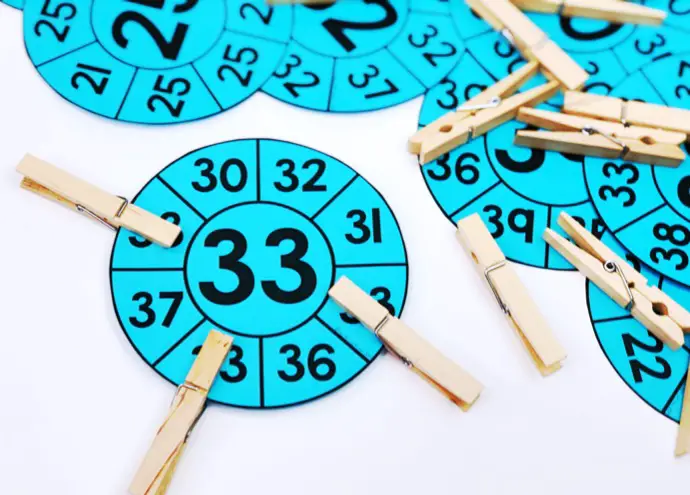
These clothespin cards provide an alternative to paper and pencil activities for children with limited writing and tracing skills. These are great for centers, individual tabletop activities, and games to review the target numbers.
Children will learn to recognize identical numbers while improving their three-finger or tripod grasp as they use the clothespins. This grasp is necessary for children to be able to hold pencils or markers and to write efficiently.
Download and print the number cards from the site. Cut them out and laminate them for durability. Point out to the children the number in the middle of the circle. Ask if they can identify it. Tell children that they are to find the exact number around the circle.
Once they find these, they are to attach clothespins to the same numbers. Children can use these cards to review and learn bigger numbers than ten. The cards include zero to one hundred.
For this activity, you will need:
- Printed number cards
- Clothespins
For more information on this activity, go to YouAut-AKnow.com.
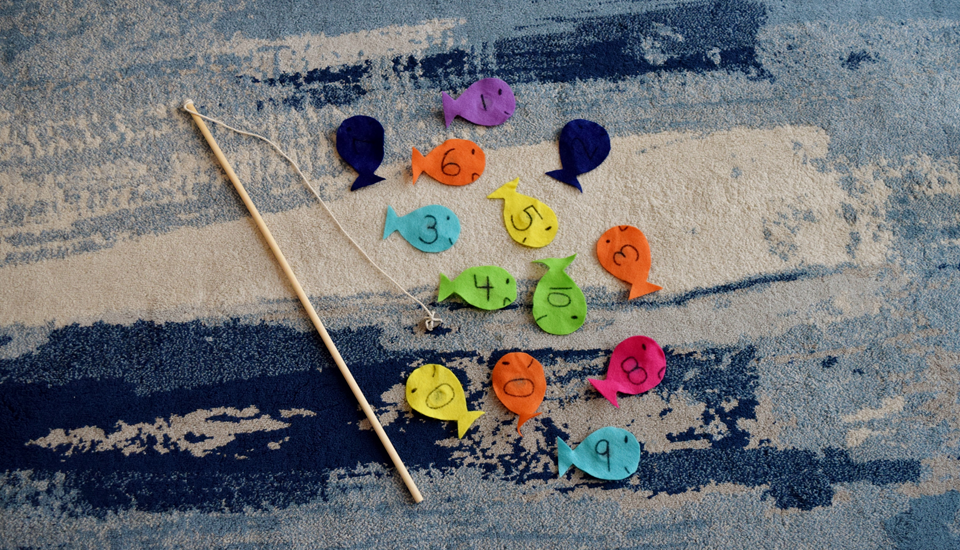
Fishing for numbers is an exciting activity for children. This activity will help children reinforce number recognition skills and improve their coordination.
Using felt cloth will also help children learn colors. Cutting out the fish shapes will help with their fine motor skills.
Cut to size the dowel rod. Ensure that the rod is short enough for children to handle. Tie a string on one end tightly. Ensure that the string length is enough for children to use the rod comfortably.
At the end of the string, tie a magnet. To prevent this from slipping off, use the hot glue gun to secure it on the string. Refer to the pictures on the site for this step.
Next, make a fish template on scrap cardboard. Use this to trace onto the felt. Cut these out and write the numbers in the middle with a marker. Flip the fish and use a hot glue gun to attach the magnet.
Lay the fish on the floor and have the children use the rod to pick them up. Children must say the number on the fish and continue until no fish is left.
For this activity, you will need:
- Dowel rods
- String
- Magnets
- Felt cloth
- Hot glue gun
- Marker scissors
- Cardboard
For more information on this activity, go to MomentsEnriched.com.
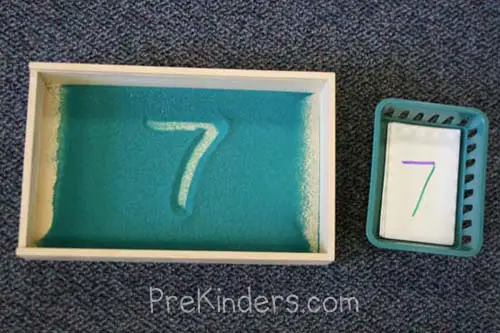
Playing with sand provides a sensory experience. The grainy texture of sand against a flat surface enables children to understand how contrasting textures feel. Use this activity for children to recognize, copy, and trace different numbers.
This is an excellent activity for children who refuse pencil and paper tasks. It is a beautiful addition to centers and for individual tabletop activities when practicing number writing.
Use a wooden box or carton that can accommodate a good amount of sand without the possibility of quickly spilling them when moved.
Choose a box or tray with elevated sides. Pour enough colored sand into it. Shake the container to spread the sand evenly. The bottom of the box should not be visible; add more sand if necessary.
Show the child a number card. Ask the child the name of the number. Have the child finger trace the number on the card, then in the sand. Do this to target a specific number or to work on a series.
For this activity, you will need:
- Number cards
- Sand box or tray
- Colored sand
For more information on this activity, go to PreKinders.com.
Conclusion
Educators need different ways to help children gain number recognition skills. Children will respond well when tasks are filled with fun and excitement.
They will retain information better when activities are enjoyable. It will also encourage them to learn more once they experience that learning can be fun-filled.
Choose any of the activities on this list that best fits the child’s ability.
Thank you for reading!


